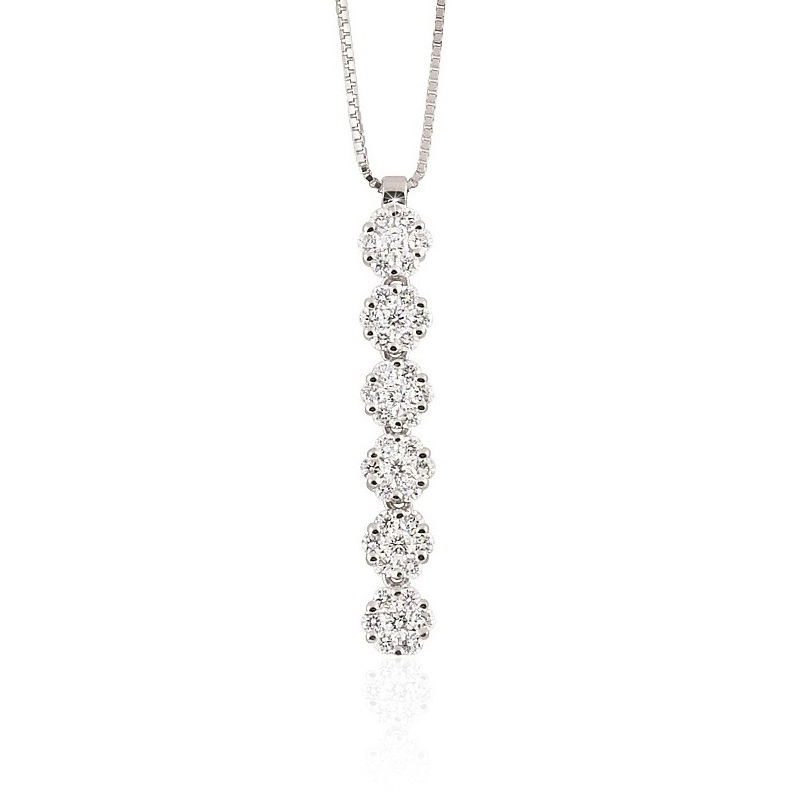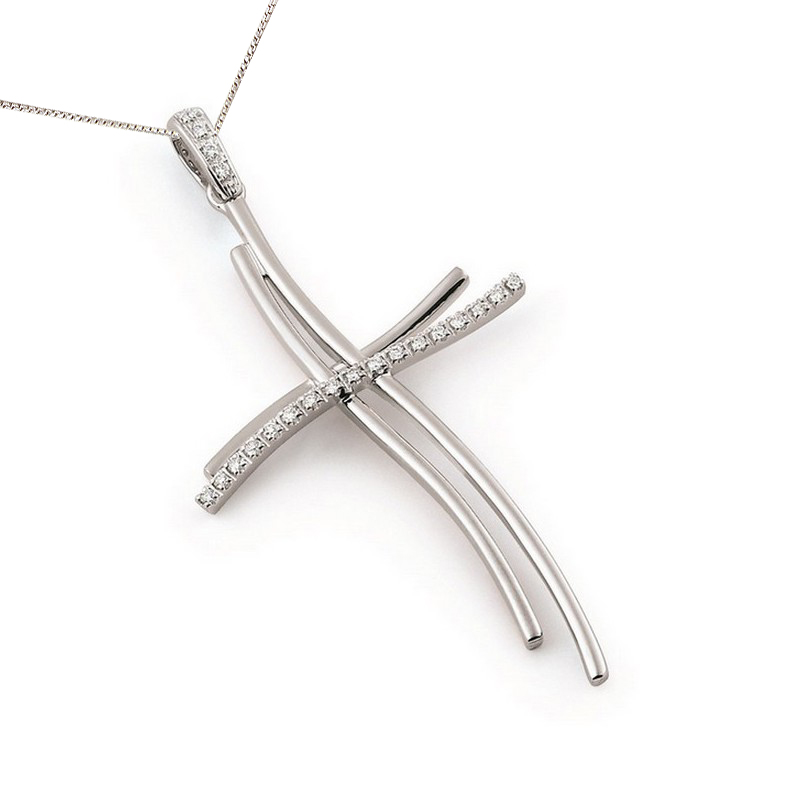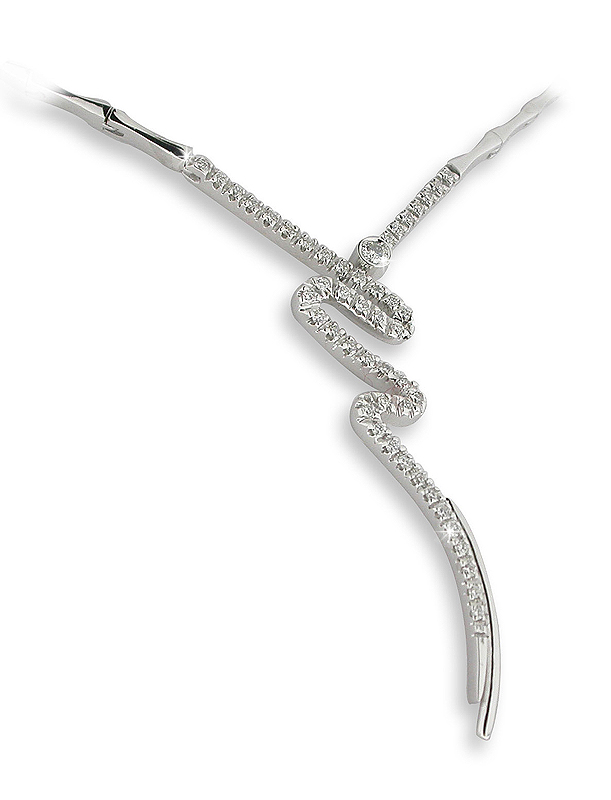- Free Shipping Over $75
- Easy 30-day returns
- Craftsmanship
- Signature Diamonds
- 360 Degrees
- Settings
The Evolution & Transformation of Diamond Necklaces
The Evolution & Transformation of Diamond Necklaces
Victorian, Etruscan and Other Antique NecklacesIt is widely believed that diamond necklaces have experienced a transformation that is equivalent to engagement rings. There was a substantial period of time, during which necklaces resembled ornaments, chandeliers and other decorations that today largely make up the category of home decor. It is difficult to imagine that fine jewelry once consisted of the types of objects and designs that may now be found on a christmas tree, a mantel or a bookshelf. It seems inconceivable that Victorian necklaces contained round pendants resembling coins, and marquise-shaped pendants with colored enamel and natural split pearls. And quite the possibly the biggest shock of all - drop pendants with applied gold wire work in the Etruscan style, resembling a series of excavations that took place in Italy at that time. A Sheer Resemblance of an Antique Diamond Necklace Modern diamond necklaces are so vastly different that it is often difficult to believe that today’s necklace designs actually originated from coins and chandeliers. This old-fashioned five-diamond “journey” necklace features five round bezels. Two hundred years ago the gold bars that connect the five bezels in this diamond necklace would have consisted of actual wire work, and the necklace would have been produced entirely by hand. This design, on the other hand, was produced 100% with CAD casting technology, where the mold was printed from a CAD design. Additionally, two hundred years the five bezels would likely be set with pearls, or other gems, depending on what was prevalent in that specific period of time. In fact, the most “old-fashioned” design element of this necklace is arguably the 14k yellow gold base metal. Modern Diamond Necklaces and What Sets Them Apart The more modern version of this necklace now features prong set diamonds, and to enhance the former version with the bezel, in this diamond necklace the bezels are replaced with more round cut diamonds, thereby creating round halos. The modern necklace design typically goes for more lavish character, which tends to result in larger sizes and higher quantity of stones, more base metal and other aspects of the design. In this case, the necklace is made longer than its bezel predecessor, and the diamonds render the added fire and scintillation, which are almost entirely missing from the diamond necklaces produced in the 1800s and 1900s. Diamond Necklaces and Engagement Rings It is also worth noting that today’s necklaces often closely resemble their diamond engagement ring counterparts. The solitaire, halo and three stone necklaces have become mainstream. Infinity necklaces have also gained popularity. And while you would not typically encounter the term “side stone” in the context of necklaces, accent diamonds scattered throughout all or parts of a necklace or pendant has also become a common practice. This necklace also features a design element previously found only in clothing - the v-shape. While v-shapes have become mainstream in various shirts and other aspects of high fashion, jewelry designers also started introducing the v-shape in diamond necklaces. This particular v-shape is decorated with prong set, round cut diamonds, giving rise to the round cut halo. Religious Necklaces Not particularly prevalent in the 1800s and 1900s, today’s necklaces include faith, religion and spiritual expressions. From diamond cross necklaces to the star of David, angels, Buddha and other expressions of faith, religious necklaces have gained tremendous popularity in the 21st century, and are expected to continue to gain traction as the world becomes more accepting and inclusive. Modern and Contemporary Diamond Necklaces As expected, some jewelry designers have decided not to conform, and have come up with diamond necklace designs that have no designation, title or otherwise identifiable design characteristics. This Italian necklace can be argued to resemble lightning, a serpentine or simply a capricious squiggle. Perhaps it is the absence of a category or designation that makes it contemporary, but contemporary necklaces are also argued to be a category in and of itself. In fact, the modernization movement of diamond necklaces could very well have accounted for such a drastic transformation from the ornaments and chandeliers of previous centuries, to today’s halo, three stone and other drop necklace designs. Respecting the History of the Diamond NecklaceWhile the modern and the contemporary necklaces have earned their place in our era in the most profound ways, the ornaments and chandeliers have earned their respect as well. Much like antique engagement rings, which featured pearls, ornaments and variations of ethnic patterns, modern diamond necklaces needed a starting point just as much. And while old-fashioned necklaces are rarely seen or worn today, they paved the way for innovation, and created the mainstream diamond necklaces we could not imagine life without today. We can’t wait to see what the next decade of design transformation will bring, but the level of progress diamond necklace designs have already experienced cannot be overstated. |












